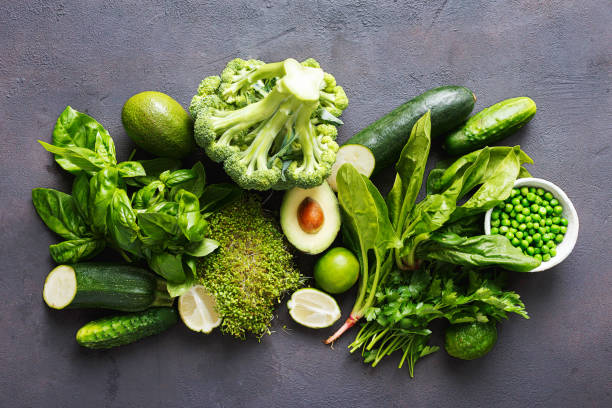As a dog lover and responsible pet owner, you’re likely here because you genuinely care about the well-being of your four-legged friend. Navigating the vast landscape of canine nutrition can be both intriguing and daunting, especially when it comes to specific food items.
If you’ve found yourself pondering the question, “Can Dogs Eat Green Chiles?” it’s clear that you’re on a quest for knowledge, seeking insights to ensure you make informed decisions about your dog’s diet. Your concern for your furry companion’s health is commendable, and it’s precisely this kind of conscientiousness that fuels the curiosity behind such queries.
In my years of veterinary practice, I’ve encountered numerous pet owners grappling with the same question. The world of pet nutrition is rife with information, often conflicting and confusing. As a seasoned veterinary professional, I understand the nuances and intricacies of canine dietary needs, and I’m here to provide clarity.
If you’re seeking a definitive answer to the question that brought you here, you’re in the right place. In the forthcoming article, I will delve into the complexities surrounding dogs and green chiles, exploring the potential risks and benefits, and offering practical guidelines for responsible pet ownership.
Dogs should not eat green chiles. While small amounts may not be immediately harmful, the capsaicin in chiles can cause digestive distress, vomiting, and diarrhea in dogs. Additionally, some dogs may be more sensitive to spicy foods.
- Understanding Canine Diet
- Nutritional Content of Green Chiles
- Can Dogs Safely Consume Green Chiles?
- Health Benefits of Green Chiles for Dogs
- Risks and Dangers of Feeding Green Chiles to Dogs
- Signs of Green Chile Toxicity in Dogs
- Moderation and Preparation Tips
- Alternatives to Green Chiles in a Dog’s Diet
- Final Thoughts: Can Dogs Eat Green Chiles?
- Frequently Asked Questions on Feeding Dog Green Chiles?
Understanding Canine Diet

Dogs, our beloved companions, rely on a well-balanced diet to thrive. As a seasoned veterinary professional, I understand the intricate nuances of canine nutrition.
In this section, we delve into the fundamentals of a dog’s dietary needs, exploring the impact of certain human foods and emphasizing the pivotal role of moderation and balance in maintaining optimal health.
Dog’s Dietary Needs
Our canine friends, much like us, require a balanced and nutritious diet to support their growth, energy levels, and overall well-being.
Essential components such as proteins, fats, vitamins, and minerals play crucial roles in various physiological functions.
As a veterinary doctor, I stress the importance of tailoring a dog’s diet to its individual needs, considering factors such as breed, size, age, and health status. This ensures that dogs receive the necessary nutrients for a vibrant and active life.
How Certain Human Foods Can Affect Dogs
While dogs share our homes and hearts, their digestive systems differ significantly from ours. This uniqueness makes it essential to understand how certain human foods can impact our furry companions.
In my years of veterinary experience, I’ve witnessed the aftermath of well-intentioned but misguided feeding choices. Green chiles, for instance, stand as a potential dietary concern for dogs.
The spiciness and capsaicin content in these peppers can lead to digestive discomfort and, in severe cases, pose health risks. It’s crucial to exercise caution and make informed decisions about incorporating human foods into a dog’s diet.
The Role of Moderation and Balance in a Dog’s Diet
Moderation and balance emerge as guiding principles in crafting a wholesome diet for dogs. As a responsible pet owner, it’s vital to strike the right balance between nutritional variety and potential risks associated with certain foods.
In my veterinary practice, I often emphasize the significance of moderation, as excessive or unmonitored consumption of even seemingly harmless items can lead to health issues.
Green chiles, for example, should be offered sparingly if at all, with careful attention to a dog’s individual tolerance level.
Achieving balance ensures that dogs enjoy a diverse yet safe culinary experience, contributing to their long-term health and happiness.
Also Read: Can Dogs Eat Frosting?
Nutritional Content of Green Chiles

In the ever-evolving landscape of pet nutrition, it becomes imperative to scrutinize the nutritional content of every item that finds its way into a dog’s bowl.
Green chiles, while a staple in many human diets, present a unique set of considerations when it comes to canine consumption.
As a seasoned veterinary professional, let’s unravel the nutritional intricacies of green chiles and explore how they align with our furry friends’ dietary needs.
The Nutritional Components in Green Chiles
Green chiles boast a vibrant profile, rich in various nutrients. These peppers are a notable source of vitamins, particularly vitamin C, which plays a crucial role in supporting a dog’s immune system.
Additionally, green chiles contain essential minerals such as potassium and magnesium, contributing to overall metabolic function. However, it’s crucial to approach this nutritional bounty with caution.
The spiciness characteristic of chiles is attributed to capsaicin, a compound that can trigger digestive discomfort in dogs. As a seasoned veterinarian, my advice is to carefully assess a dog’s individual tolerance before introducing green chiles into their diet.
Comparison with a Dog’s Nutritional Requirements
Dogs, being omnivores, have distinct nutritional needs that differ from those of humans. While green chiles offer certain vitamins and minerals, they may not align perfectly with a dog’s requirements.
For instance, dogs have a limited ability to taste sweetness, and the spiciness of chiles might be overwhelming for their sensitive palates. Moreover, the capsaicin content, responsible for the heat in chiles, can pose challenges for canine digestive systems.
Potential Benefits of Green Chiles for Dogs
Amidst the potential risks, there are considerations for potential benefits when it comes to green chiles and dogs. The vitamin C content in chiles, for example, can contribute to a dog’s immune health.
Additionally, certain antioxidants present in green chiles may have anti-inflammatory properties. However, these potential benefits must be weighed against the risks and the individual characteristics of each dog.
In my veterinary practice, I advocate for moderation and mindful observation when introducing new elements into a dog’s diet. This ensures that potential benefits are harnessed while minimizing any adverse effects.
Also Read: Can Dogs Eat Cassava Flour?
Can Dogs Safely Consume Green Chiles?

The intersection of canine health and human culinary choices prompts a critical examination of the safety of incorporating green chiles into a dog’s diet.
As a seasoned veterinary professional, I embark on unraveling the complexities surrounding this particular culinary curiosity, weighing the delicate balance between a dog’s digestive system and the potential risks associated with the consumption of green chiles.
Dogs’ Digestive Systems and Dietary Requirements
Understanding a dog’s digestive system is paramount when evaluating the safety of introducing novel foods.
Dogs, by nature, have a shorter digestive tract designed for the rapid breakdown of animal proteins. While they exhibit some omnivorous tendencies, the inclusion of plant-based foods, like green chiles, requires careful consideration.
The digestive enzymes and pH levels in a dog’s stomach differ from those in humans, impacting how they process and absorb nutrients. As a veterinarian, I stress the need to align any dietary additions with a dog’s evolutionary and physiological predispositions to foster optimal health.
Veterinary Perspectives on Feeding Green Chiles to Dogs
Navigating the realm of canine nutrition necessitates drawing upon expert opinions and veterinary insights.
Respected professionals in the field of veterinary medicine often caution against introducing spicy or potentially irritating foods, such as green chiles, into a dog’s diet. The consensus among veterinarians is rooted in an understanding of the potential hazards these foods pose to canine digestive health.
This perspective underscores the need for prudence and informed decision-making when contemplating the inclusion of green chiles in a dog’s culinary repertoire.
Common Health Concerns Associated with Dogs Consuming Green Chiles
While dogs showcase resilience in their dietary adaptability, certain health concerns emerge when green chiles enter the equation.
The capsaicin content in these peppers, responsible for their spiciness, can trigger gastrointestinal distress in dogs. Common symptoms include vomiting, diarrhea, and abdominal discomfort. In severe cases, ingestion of green chiles may lead to more serious complications.
As a vigilant advocate for canine well-being, I urge pet owners to be aware of these potential health concerns and exercise caution when considering green chiles as part of their dog’s diet.
Also Read: Can Dogs Eat Buckwheat Flour?
Health Benefits of Green Chiles for Dogs

While the potential risks of feeding green chiles to dogs warrant careful consideration, it’s equally important to explore the flip side — the potential health benefits these peppers might offer our canine companions.
Potential Positive Effects on Canine Metabolism
Green chiles, packed with an array of nutrients, harbor the potential to positively influence a dog’s metabolism.
The presence of vitamins and minerals, particularly vitamin C and certain antioxidants, can contribute to overall metabolic function.
Anti-inflammatory Properties and Their Impact on Certain Health Conditions
One intriguing aspect of green chiles is their potential anti-inflammatory properties. Certain compounds present in these peppers may contribute to reducing inflammation, which could be beneficial for dogs dealing with specific health conditions.
In my veterinary practice, I’ve observed instances where controlled and mindful inclusion of anti-inflammatory foods has been considered as part of a holistic approach to managing certain canine health issues.
Nevertheless, it’s crucial to approach this potential benefit with caution, tailoring any dietary adjustments to the specific needs and conditions of the individual dog.
Moderation as a Key Factor in Deriving Benefits Without Risks
The overarching theme when exploring the health benefits of green chiles for dogs is moderation. As a seasoned veterinarian, I emphasize the importance of moderation as a guiding principle in incorporating any new elements into a dog’s diet.
While the potential benefits are enticing, excessive consumption of green chiles can tip the scale towards adverse effects.
Pet owners should approach dietary modifications with a keen eye on balance, ensuring that any potential benefits are derived without exposing their canine companions to unnecessary risks.
Also Read: Can Dogs Eat Oat Flour?
Risks and Dangers of Feeding Green Chiles to Dogs

As we explore the potential risks and dangers associated with feeding green chiles to dogs, it becomes imperative to approach this topic with a discerning eye.
While the culinary world often touts the benefits of these peppers, a deeper understanding is necessary when considering their impact on our canine companions.
In this section, we unravel the potential pitfalls, ranging from gastrointestinal issues to the impact of capsaicin and the specter of allergic reactions, guiding pet owners toward informed decisions about their dogs’ diets.
Potential Gastrointestinal Issues
The digestive tract of our canine friends is finely tuned to their dietary needs, and the introduction of certain foods can disrupt this delicate balance.
Green chiles, with their spiciness and capsaicin content, pose a potential risk of inducing gastrointestinal distress in dogs. Common symptoms include vomiting, diarrhea, and abdominal discomfort.
In my veterinary practice, I’ve encountered cases where well-meaning pet owners, unaware of the potential pitfalls, inadvertently subject their dogs to unnecessary digestive challenges.
Understanding and recognizing these potential gastrointestinal issues is paramount for responsible pet ownership.
Impact of Capsaicin on Dogs’ Sensitivity and Tolerance
Capsaicin, the compound responsible for the heat in green chiles, plays a pivotal role in determining a dog’s sensitivity and tolerance to these peppers.
Dogs, with their unique palates and digestive systems, may react differently to capsaicin, and some may be more susceptible to its effects.
As a seasoned veterinary professional, I advise pet owners to be vigilant about observing their dogs for signs of discomfort or distress after consuming green chiles. Recognizing individual tolerance levels is crucial in gauging the appropriateness of including these peppers in a dog’s diet.
Allergic Reactions and Potential Toxicities
Beyond gastrointestinal concerns, there exists the potential for allergic reactions and toxicities associated with green chiles.
While relatively rare, certain dogs may exhibit hypersensitivity to specific compounds in these peppers, leading to allergic responses. Additionally, the accumulation of capsaicin, especially in larger quantities or with prolonged exposure, can result in more serious toxicities.
As a responsible veterinary practitioner, I emphasize the need for pet owners to be vigilant, recognize signs of adverse reactions, and seek prompt veterinary attention if any suspicion of toxicity arises.
Also Read: Can Dogs Eat Bonito Flakes?
Signs of Green Chile Toxicity in Dogs

Vigilance in pet care involves not only understanding the potential risks but also being adept at recognizing signs of distress or toxicity.
In the case of green chiles, a seemingly harmless addition to a dog’s diet can take a perilous turn if toxicity is overlooked.
Symptoms Indicating a Negative Reaction
Green chile toxicity manifests in various symptoms that serve as red flags for concerned pet owners. These may include persistent vomiting, diarrhea, excessive drooling, abdominal pain, and restlessness.
In severe cases, dogs may exhibit difficulty breathing, elevated heart rate, and even collapse. As a veterinary professional, I stress the need for pet owners to be attuned to changes in their dogs’ behavior and physical condition, as these symptoms could indicate a negative reaction to the consumption of green chiles.
Immediate Actions to Take if Toxicity is Suspected
Prompt and decisive actions are crucial when toxicity is suspected. If a dog displays any of the aforementioned symptoms after consuming green chiles, it is imperative to seek immediate veterinary attention.
Pet owners should refrain from attempting home remedies or administering over-the-counter medications without professional guidance.
In cases of toxicity, time is of the essence, and the expertise of a veterinarian is indispensable in ensuring the best possible outcome for the affected dog.
Importance of Consulting with a Veterinarian for Professional Advice
The expertise of a veterinarian is invaluable when navigating the complexities of potential toxicity. If there is any suspicion that a dog has ingested an excessive amount of green chiles or is displaying adverse reactions, consulting with a veterinarian is non-negotiable.
Professional advice ensures a swift and accurate diagnosis, enabling the implementation of targeted interventions.
Also Read: Can Dogs Eat Bran Flakes?
Moderation and Preparation Tips

In the realm of canine nutrition, responsible pet ownership goes hand in hand with understanding how to safely integrate new elements into a dog’s diet.
When it comes to green chiles, moderation and careful preparation become paramount. In this section, we delve into guidelines for incorporating green chiles into a dog’s diet safely, exploring suitable forms of these peppers, and providing recommendations on serving sizes based on a dog’s size and breed.
Incorporating Green Chiles into a Dog’s Diet Safely
The key to safely incorporating green chiles into a dog’s diet lies in meticulous moderation. Pet owners should start with minimal amounts and observe their dog’s reactions closely.
It’s advisable to introduce green chiles gradually and monitor for any signs of gastrointestinal distress or allergic reactions. Consulting with a veterinarian before making such dietary changes is highly recommended, especially for dogs with pre-existing health conditions.
Responsible pet ownership involves a delicate balance between offering novel experiences and safeguarding a dog’s well-being.
Suitable Forms of Green Chiles for Dogs (Cooked, Raw, etc.)
The form in which green chiles are offered to dogs can significantly impact their digestibility and safety. While cooking green chiles can help break down some of the spiciness and make them more palatable for dogs, it doesn’t eliminate the potential risks associated with capsaicin.
Raw green chiles, on the other hand, maintain their full spiciness and capsaicin content. As a veterinary professional, my recommendation is to opt for cooked and mild forms of green chiles if inclusion in a dog’s diet is considered.
This minimizes potential digestive discomfort while allowing dogs to experience the flavor without the full heat of raw peppers.
Recommended Serving Sizes Based on Dog Size and Breed
Determining appropriate serving sizes is a nuanced aspect of introducing green chiles to a dog’s diet. The size and breed of the dog play a crucial role in this consideration.
Smaller breeds should receive significantly smaller portions compared to larger breeds. As a general guideline, it’s advisable to start with a minuscule amount, such as a tiny piece mixed with their regular food.
Careful observation of the dog’s reaction will guide adjustments to serving sizes. In my veterinary practice, I often stress the importance of erring on the side of caution, as dogs can be sensitive to even small amounts of spicy foods.
Also Read: Can Dogs Eat Swedish Fish?
Alternatives to Green Chiles in a Dog’s Diet

While the allure of introducing novel flavors to a dog’s diet is understandable, it’s equally important to consider alternatives that offer both palatability and nutritional value without the potential risks associated with green chiles.
In this section, we explore a comprehensive list of dog-friendly vegetables and fruits, provide a selection of balanced and vet-approved treats, and underscore the significance of maintaining a diverse and nutritionally complete diet for our canine companions.
List of Dog-Friendly Vegetables and Fruits
| Vegetables | Fruits |
| Carrots | Apples |
| Sweet Potatoes | Blueberries |
| Broccoli | Strawberries |
| Pumpkin | Bananas |
| Spinach | Watermelon (seedless) |
| Zucchini | Mango |
| Cucumber | Pineapple |
This list offers a variety of vegetables and fruits that can be safely incorporated into a dog’s diet, providing essential vitamins, minerals, and antioxidants without the potential risks associated with spicy foods like green chiles.
Balanced and Vet-Approved Treats for Dogs
| Treat Type | Ingredients |
| Salmon Treats | Salmon, Sweet Potato |
| Peanut Butter Bites | Oats, Peanut Butter, Banana |
| Chicken Jerky | Chicken Breast Strips |
| Veggie Delights | Carrot, Spinach, Pumpkin, Chickpea Flour, Eggs |
| Blueberry Bliss | Blueberries, Oats, Yogurt |
| Dental Chew Sticks | Brown Rice Flour, Chicken Meal, Peppermint Oil |
These balanced and vet-approved treats offer a range of flavors and textures, providing a safe and enjoyable snacking experience for dogs.
Diverse and Nutritionally Complete Diet for Canine Companions
While treats and occasional indulgences are part of a dog’s culinary experience, ensuring a diverse and nutritionally complete diet is crucial for their overall well-being.
A balanced diet includes a mix of high-quality commercial dog food, lean proteins, healthy fats, and a variety of fruits and vegetables.
Consulting with a veterinarian to create a customized diet plan based on a dog’s individual needs and preferences is an excellent way to guarantee optimal nutrition and health.
Also Read: Can Dogs Eat Deer Legs?
Final Thoughts: Can Dogs Eat Green Chiles?

No, dogs should not eat green chiles. The spiciness and capsaicin in these peppers can cause digestive issues and discomfort for dogs.
It’s essential to prioritize their well-being and avoid feeding them spicy or potentially harmful foods. Opt for safer and canine-friendly alternatives to ensure a healthy and happy diet for your furry friend.
If you have concerns or questions about your dog’s diet, consult with a veterinarian for personalized guidance.
Recap of Key Points Regarding Dogs and Green Chiles
Throughout this journey, we’ve delved into the multifaceted aspects of dogs and green chiles. From understanding canine dietary needs to navigating potential benefits and risks, the key takeaway is the importance of approaching such culinary choices with caution.
Green chiles, with their unique spiciness and capsaicin content, pose both potential benefits and hazards, necessitating a nuanced and informed perspective when considering them as part of a dog’s diet.
Responsible Pet Ownership and Informed Decision-Making
Responsible pet ownership is synonymous with informed decision-making, especially when it comes to introducing new elements into a dog’s diet.
The choices we make impact the health and well-being of our furry companions. As a veterinary professional, I advocate for a thoughtful approach, where pet owners weigh the potential risks and benefits, monitor for any adverse reactions, and remain attentive to their dogs’ individual needs.
In the ever-evolving landscape of canine nutrition, knowledge is a powerful tool in fostering a thriving and happy canine family member.
Consult with a Veterinarian for Personalized Advice
The journey of pet ownership is dynamic, and no two dogs are alike. As we navigate the complexities of dietary choices, the guidance of a veterinarian becomes an invaluable resource.
For personalized advice tailored to the unique needs of your dog, consulting with a veterinary professional is strongly encouraged.
Whether considering the inclusion of green chiles or exploring alternative treats, veterinarians provide the expertise needed to make informed decisions that prioritize the health and happiness of our canine companions.









